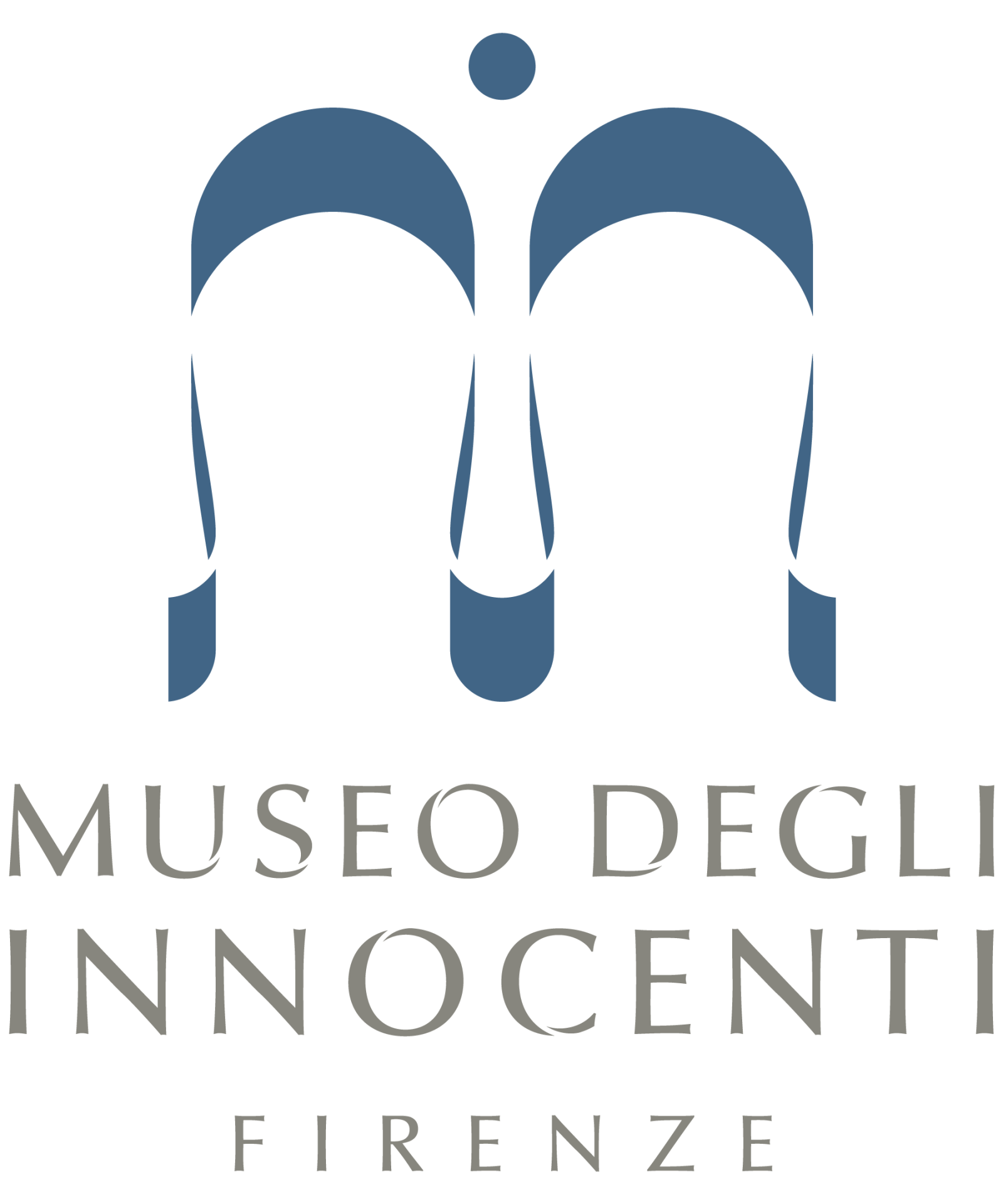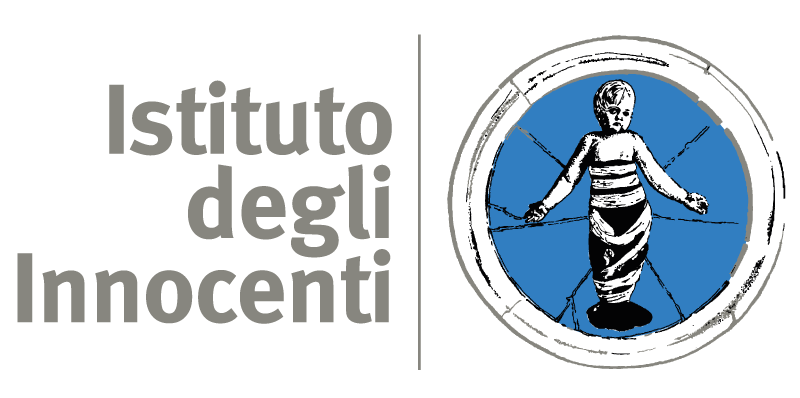This issue The Curators’ Quaderno is published by Calliope Arts Foundation in conjunction with the Innocenti Institute in Florence, for the project ‘Girls in the Innocenti Archive’ and the museum exhibit of the same name (14 November 2025 to March 15, 2026) at the Innocenti Museum, thanks to the support of . of donors Connie and Doug Clark and Margie MacKinnon and Wayne McArdle.
The Quaderno traces the path that led to the impletation of the project involving the restoration, conservation, study and digitisation of approximately 120 identying tokens and related documents held in the Historical Archive, thus preserving the memory of the little “nocentine” girls and offering an insight into the condition of women in welfare institutions in the 20th century. The Quaderno can be purchased at the Bookshop for a minimum contribution of €2.
After The Broken Coin Tino the Nocentine returns to lend his voice to introduce children to the history of theIstituto degli Innocenti The narration features Margherita, a Nocentine who, thanks to her skills as a weaver, will bring a smile back into the life of Princess Mary Magdalene. A fictional tale, which, however, takes its cue from real events. The booklet The Smile of the Princess. A story of Tino il Nocentino, made possible thanks to the support of the Fondazione Istituto degli Innocenti Ets, can be purchased at the Bookshop with a minimum bid of 10 euros.
Compiled by a team of outstanding scholars, Gli Innocenti e Firenze nei secoli. A Hospital, an Archive, a City traces some of the themes that link theIstituto degli Innocenti and the evidence preserved in its archives to the history of the city, especially in the first two centuries of the Florentine institution's life during the Renaissance.
The volume is available at the Innocenti Library and can be viewed in its Online Catalog.
The publication and exhibition aim to contribute to the reconstruction of the system of assistance in Florence between the 14th and 15th centuries and the events that led to the foundation of the Innocenti, starting with the testamentary legacy of Francesco Datini, a merchant from Prato who in 1410 left a thousand florins to the Hospital of Santa Maria Nuova. The events of the donation and foundation of the Innocenti are then reconstructed, put in relation to the general trend toward specialization of welfare activities that during the fifteenth century asserted itself not only in Florence. The itinerary is completed with a look at the more recent history of the cultural heritages of Santa Maria Nuova and the Innocenti and also at their future.
The volume is available at the Innocenti Library and can be viewed in its Online Catalog.
This volume proposes the contents of the exhibition Sons of Italy. The Innocenti and the Birth of a National Childhood Project (1861-1911). The exhibition illustrates the history of the care of abandoned children in Florence, Milan, Venice, Naples and Bologna in the first fifty years of the national state, offering a never-before-seen look at a period that saw the theme of childhood and its care rightfully become part of the nascent unified policies.
Through the biographies of 15 children who lived at the Innocenti and other Italian Brefotrofi between 1861 and 1911, and thanks to period photographs, videos, objects and archival documents, Figli d'Italia recounts the daily lives of children within the institutions.
The volume is available at the Innocenti Library and can be viewed in its Online Catalog.
Produced on the occasion of the six-hundredth anniversary of the founding of theIstituto degli Innocenti, Children's View of the Future presents, in six sections, a journey that, starting with the theme of reception and protection, continues by dwelling on the themes of education and parenting; documentation and training activities , monitoring and analysis; and the promotion of rights.
The Manifesto of theIstituto degli Innocenti for Children concludes the volume.
The publication traces the unpublished writings of Vincenzo Borghini, a philologist and historian active at the court of Cosimo I de' Medici as well as Prior to the Innocenti from 1552, collected in one of the "filze degli affari" in the Archives of theIstituto degli Innocenti
The volume Ordine et Governo, edited by Giuseppe Sparnacci, a member of the Board of Directors of theIstituto degli Innocenti, comes after a long period of analysis of a number of documents left by the philologist and historian Vincenzo Borghini as well as Prior to the Innocenti and preserved in the historical archives of the institution. Such a study makes it possible to project into the complex organization of the large family of the Spedale degli Innocenti in the year 1556, whose architectural design by Brunelleschi had been enlarged precisely to meet the needs of an ever-increasing number of girls and boys taken in at the brefotrophy.
Sparnacci with this work of transcription and analysis of the documents and descriptions left by Borghini succeeds in giving, thanks also to some elements contained in other files kept in the Historical Archives, a detailed and always interesting picture of the organization of the Spedale in the twenty years from 1556 to 1577, bringing to light also important information at the historical and architectural level about the places used by the great family of the Innocenti.
The publication in Italian and English The Broken Coin. A Story of Tino the Nocentine., produced thanks to the support of the Fondazione Istituto degli Innocenti Ets on the occasion of the exhibition E l'altra metà serberò io. Signs of Recognition from the Ospedale degliIstituto degli Innocenti , tells the story of theIstituto degli Innocenti to young children through the voice of Tino il Nocentino, a child who was welcomed into the ancient hospital. The narrative takes its starting point from the accidental discovery of a broken coin in a closet by Anna and Martino, two little brothers who immediately run to their grandmother to ask about the discovery.
The exhibition And the Other Half I'll Serve. Signs of Recognition at the Ospedale degli Innocenti - which can be visited from November 4, 2022 until September 30, 2023 inside the historical section (basement) of the Museo degli Innocenti in Florence - recounts the recognition signs of children, those small objects worn upon their arrival at the historic Hospital and once necessary for future recognition by their families.
The booklet can be purchased at the Bookshop with a minimum bid of 6 euros.
The publication in Italian and English, which retraces the exhibition of the same title, aims to raise awareness and appreciation of a unique and unparalleled heritage preserved in the Historical Archives of theIstituto degli Innocenti: children's recognition signs, small objects worn upon their arrival at the historic Hospital and once necessary for future recognition by their families.
Through text and images, the volume thus recounts the function and use over the centuries of these personal markings, bearers of the unique vicissitudes of each child and his or her family. A heritage to be protected, enhanced and passed on to new generations. In the second part of the volume, a number of children's stories from the Historical Archives have been collected, each accompanied by the image of the identifying mark of belonging, the result of the photographic campaign carried out by the Institute to valorize these objects.
The publication And the Other Half I'll Serve. The Signs of Recognition of the Ospedale degli Innocenti can be purchased at the Museum's Bookshop with a minimum donation of 15 euros, to be donated to the Fondazione Istituto degli Innocenti Ets, or it can be requested to be shipped by writing to segreteria.fondazione@istitutodeglinnocenti.it, upon payment of the cost of the volume and shipping costs.
The exhibition-visitable from Nov. 4, 2022 until Sept. 30, 2023-is located within the historical section (basement) of the Museo degli Innocenti in Florence. It collects a selection of coins and medals, but also votive accessories such as rosaries, medallions and crosses, or general use items such as jewelry, buttons and ribbons.
The exhibition will also include a space dedicated to younger children in which, through the projection of animated slides, Tino il Nocentino, one of the protagonists of La moneta spezzata: una storia di Tino il Nocentino, the publication in Italian and English (with illustrations by Simone Frasca and texts by Sara Marconi) designed specifically to accompany the visit of the youngest children and realized thanks to the support of the Fondazione Istituto degli Innocenti Ets, takes shape and speaks.



